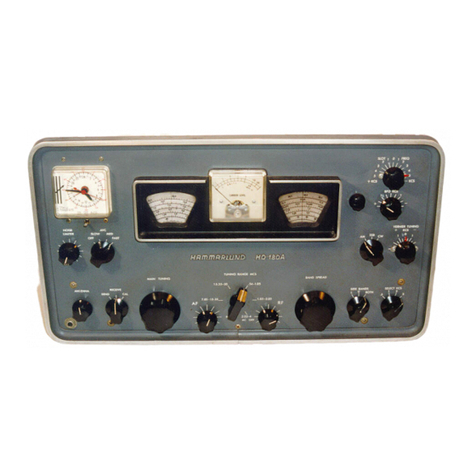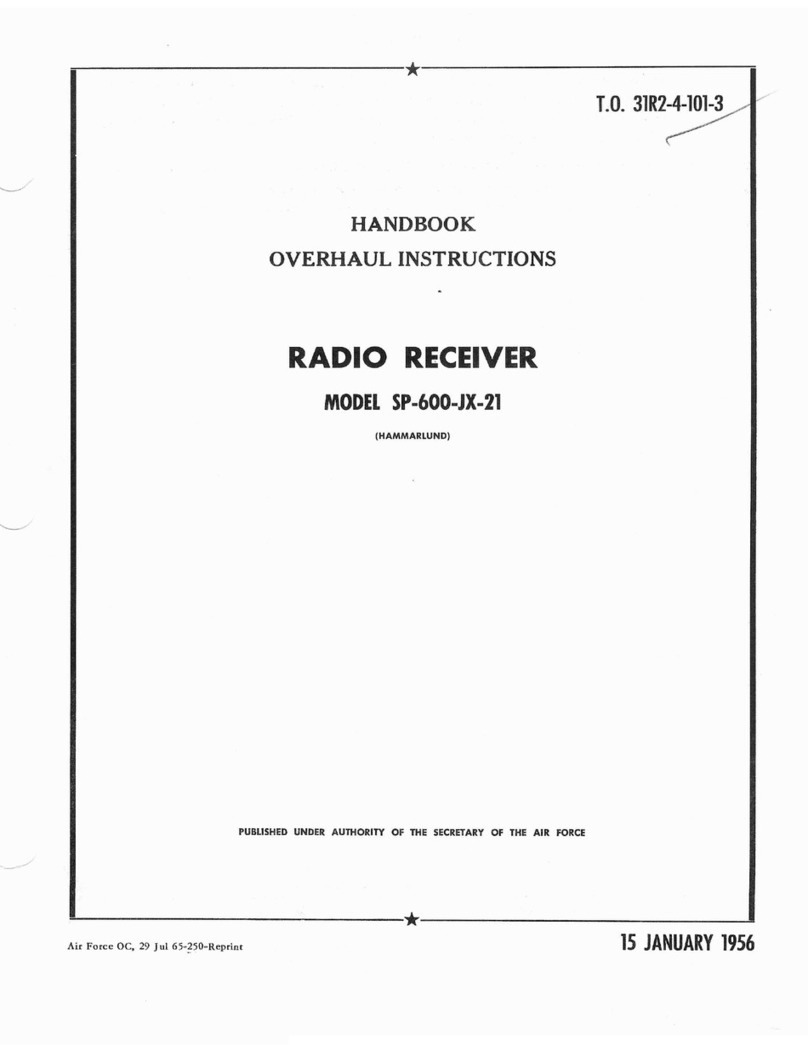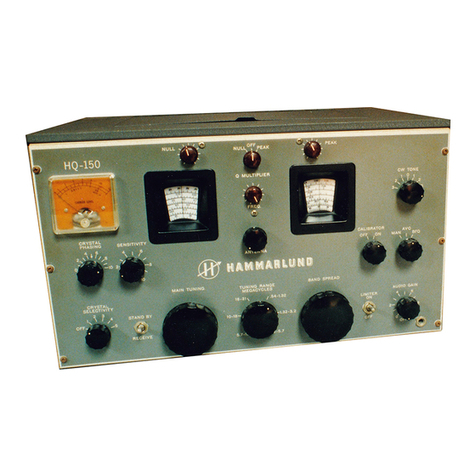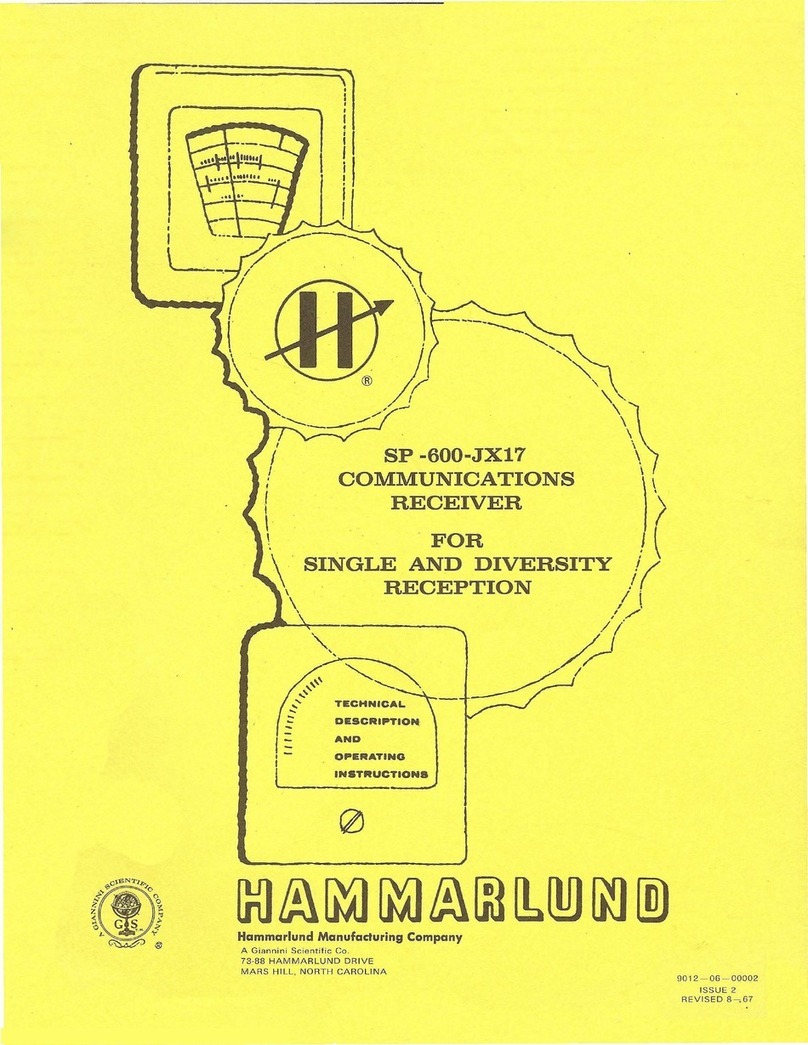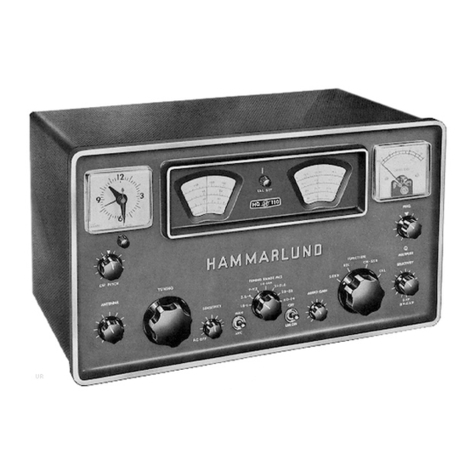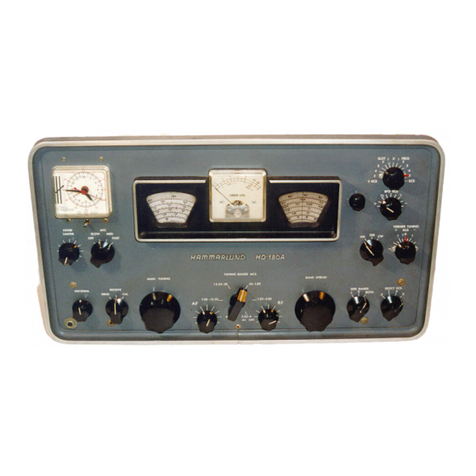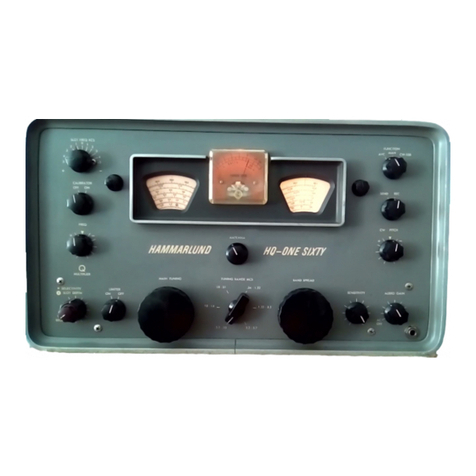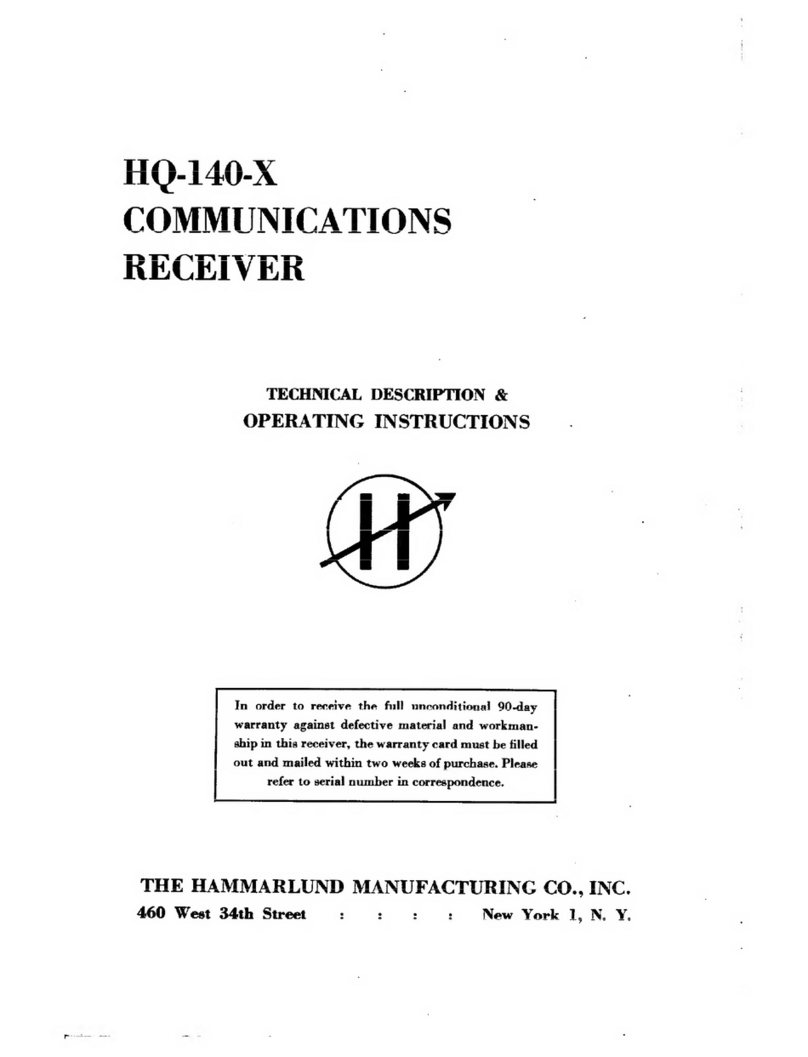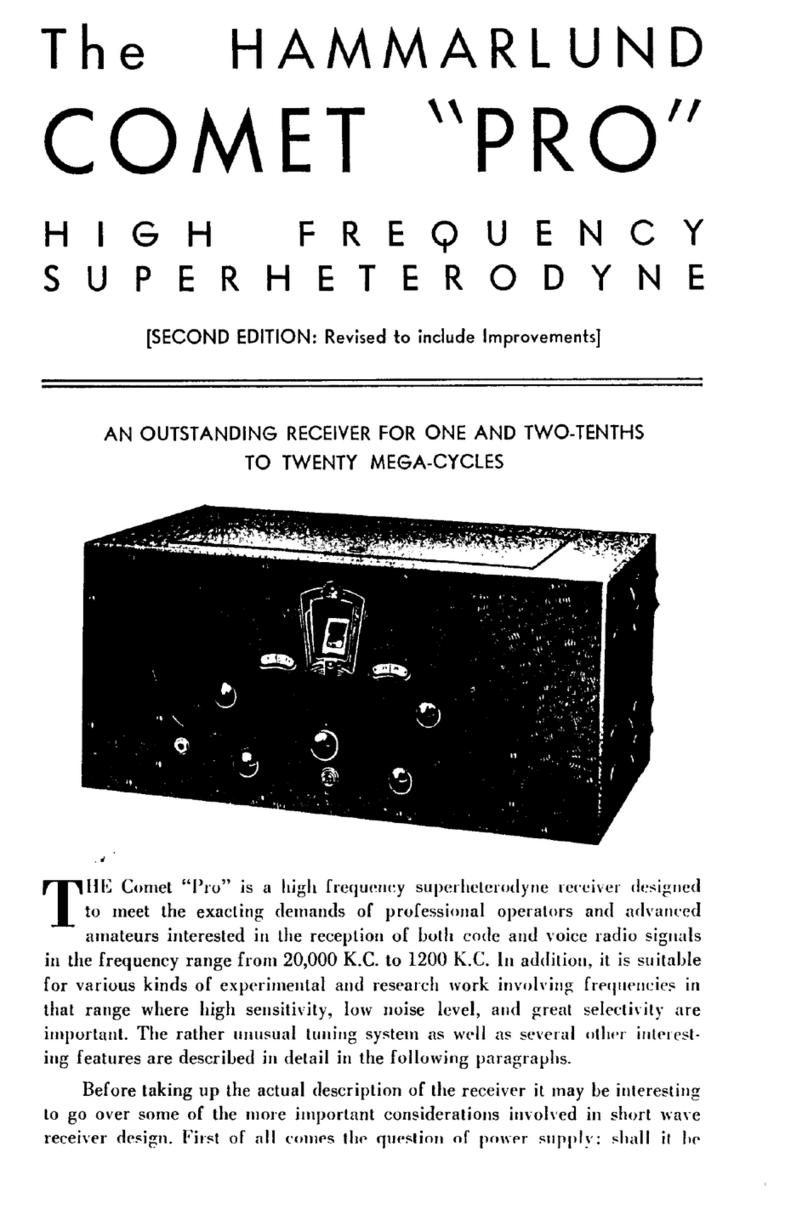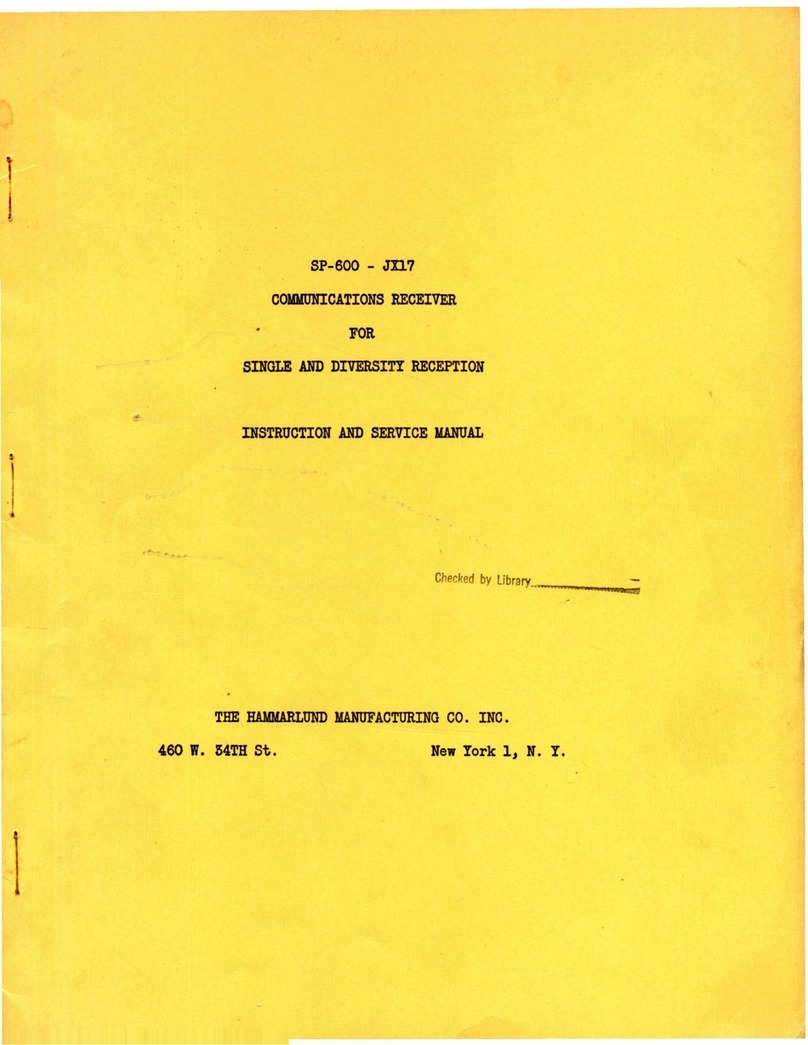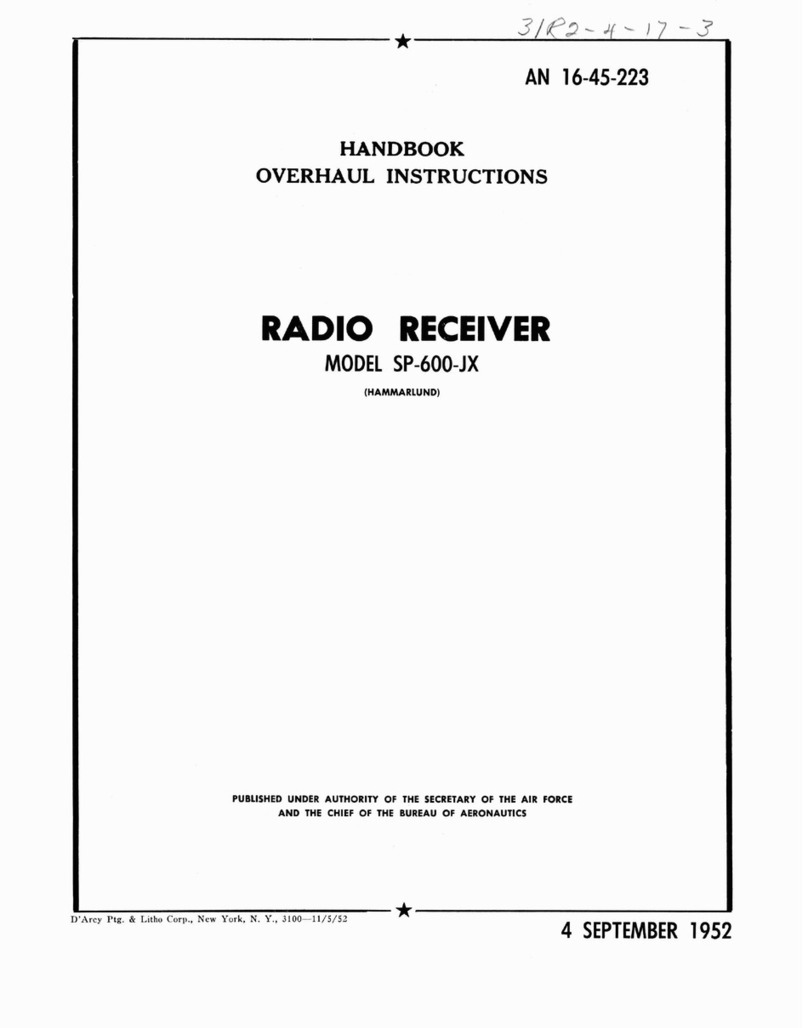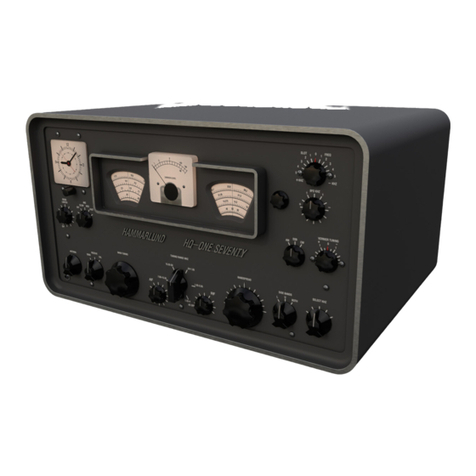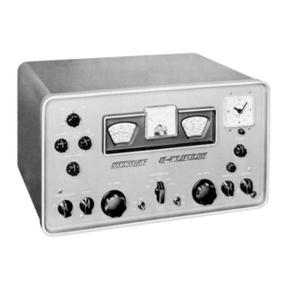T.O.
31R2-4-18-2
TABLE
1-1.
TUBE
COMPLEMENT
Section I
Paragraphs
1-17
to
1-22
I
I
JAN
TYPE
QUANT
FUNCTION
REFERENCE
SYMBOL
6BA6
or
7Amplifiers; r-f, i-f, b-f-o buffer.
VI,
V2, V7, V9, V10,
VII,
5749/6BA6W
V12
6C4 3Oscillators;
var
freq., 3.5 mc, bfo. V4, V8, V13
6AH6
1Oscillator;
freq
control. V3
6BE6 2Mixers; 1st,
2nd.
V5,V6
6AL5
or
5726/
3
Detector
and
avc; limiter
and
meter; bias
recto
V14A, B; V15A, B;
V20
6AL5W/6097
12AU7 1
Cathode
follower
and
1st audio. V16
6V6GT
1Audio
power
output.
.V17
5R4GY
1Rectifier.
V19
OA2
1
Voltage
regulator.
V18
"BEAT
OSC"
control
(18)
may be set
to
provide
receiver single-tone
output
at
any
pitch
within
the
range
of
plus
or
minus
three
kc
from
zero
tone
output.
For
frequency-shift reception, the two-tone receiver
output
provided
is
dependent
on
the
setting
chosen
for
the
control
(18)
and
on
the
carrier frequency-shift.
1-17.
The
receiver provides effective a-v-c action so
long
as
the
rate
of
signal
fading
does
not
approach
the
signal speeds used.
Whenever
the
signal carrier is
present
at
all
times such as
for
m-c-w
or
frequency-
shift
reception, the
"fast"
receiver a-v-c time
constant
is used, since its use tends
to
overcome
more
rapid
rates
of
selective
and
non-selective fading.
When
the
signal is a
cow
(keyed
carrier)
signal, use
of
the
"slow"
receiver a-v-c time constant is necessary
to
provide
for
the
a-v-c bus,
smoothing
action
with
regard
to
the
low
frequencies
comprising
high-speed
(automatic)
cow
signals.
The
"slow"
and
"fast"
receiver
a~v-c
time
constants are
both
effective
in
the
presence
of
slow
fading.
To
effectively overcome
rapid
rates
of
fading,
the
space diversity receiving system used, usually
utilizes
two
or
three
receivers,
dependent
on
whether
afrequency-shift
or
keyed-carrier, respectively, are
to
be received.
The
"A
VC"
terminals (9, figure
1-3)
when
interconnected between receivers
in
aspace diversity
receiving system, enable
the
more
negative bias, de-
veloped
by
the
signal
on
one
receiver,
to
further
reduce
the
weaker signal
and
noise due
to
the
other
receiver.
1-18.
The
receiver
"SELECTIVITY"
switch (19, figure
1-2)
provides achoice as
to
anyone
of
six degrees
of
receiver selectivity,
the
three
narrower
"SHARP"
band-
widths
being
realized
through
use
of
the
crystal filter
forming
part
of
the
i-f section
of
the
receiver.
The
crystal filter
"XTAL
PHASING"
control
(20)
with
the
switch
(19)
in
anyone
of
its
"SHARP"
positions,
provides
for
highly
attenuating
heterodyne interfer-
ence even
when
the
unwanted
signal is closely
adjacent
to
the
desired signal
tuned
in.
In
the
instance
of
noise
of
the pulse type, such as
that
due
to
ignition
systems,
Revised
10
September
1955
the
receiver noise limiter,
with
the
"LIMITER"
"OFF"
switch
(21)
in
its
"LIMITER"
position, provides
for
the
receiver noise to be bypassed
from
the
receiver
audio
output.
1-19.
PERTINENT DATA.
1-20.
TUBE
COMPLEMENT.
The
20 electron tube
complement
of
the
receiver is
shown
in
table
1-1.
The
table
identifies each tube by
JAN
type designa-
tion, circuit reference symbol
and
circuit function.
1-21.
FUSE
COMPLEMENT.
The
fuse
complement
of
the
receiver
(table
1-2)
comprises
two
fuses
and
aspare
for
each. Each fuse is glass-enclosed, indicating,
and
commercially available.
The
three-eighths ampere
fuse is
of
the
instantaneous type
and
the
1.6 ampere
fuse is
of
the
slow-blow time delay type.
The
table
identifies each fuse by Bussman
Mfg.
Co.
part
number,
ampere
rating,
circuit reference symbol,
and
type.
TABLE
1-2.
FUSE
COMPLEMENT
BUSSMAN
QUANT-
AMPERE
REFERENCE
PART
NO.
ITY
RATING
TYPE
SYMBOL
AGC3/8
2
3/8
Cartridge
F2
MDL
1-6/10
2
1-6/10
Cartridge
F1
A125V
FUSETRON
1-22.
FREQUENCY
RANGE
AND
STABILITY.
The
six frequency
bands
of
the
receiver
provide
for
con-
tinuous reception
within
the
frequency
range
of
0.54
.
to
54.0 mc. Subsequent to a15-minute
warm-up
period,
the
receiver frequency
drift,
as apercentage
of
the
signal frequency
tuned
in, ranges
from
0.001 to 0.01
percent.
This
frequency stability approaches
that
pro:
vided by
the
receiver
for
fixed-frequency crystal-con-
trolled
reception,
within
the
frequency
range
of
two
to
30.0 mc. s
